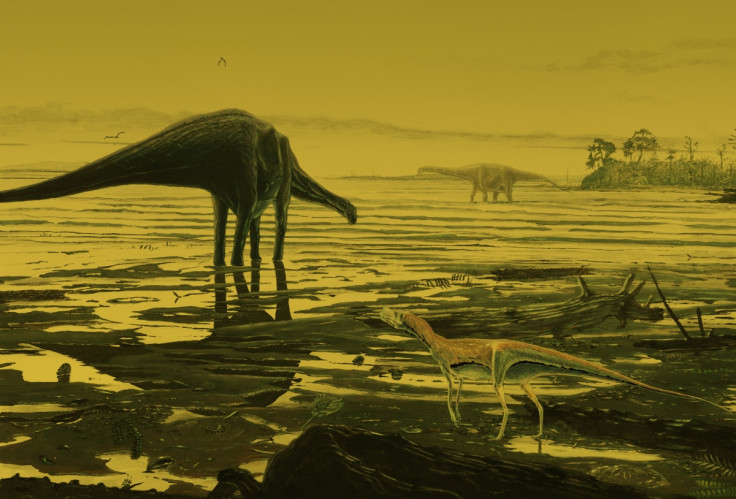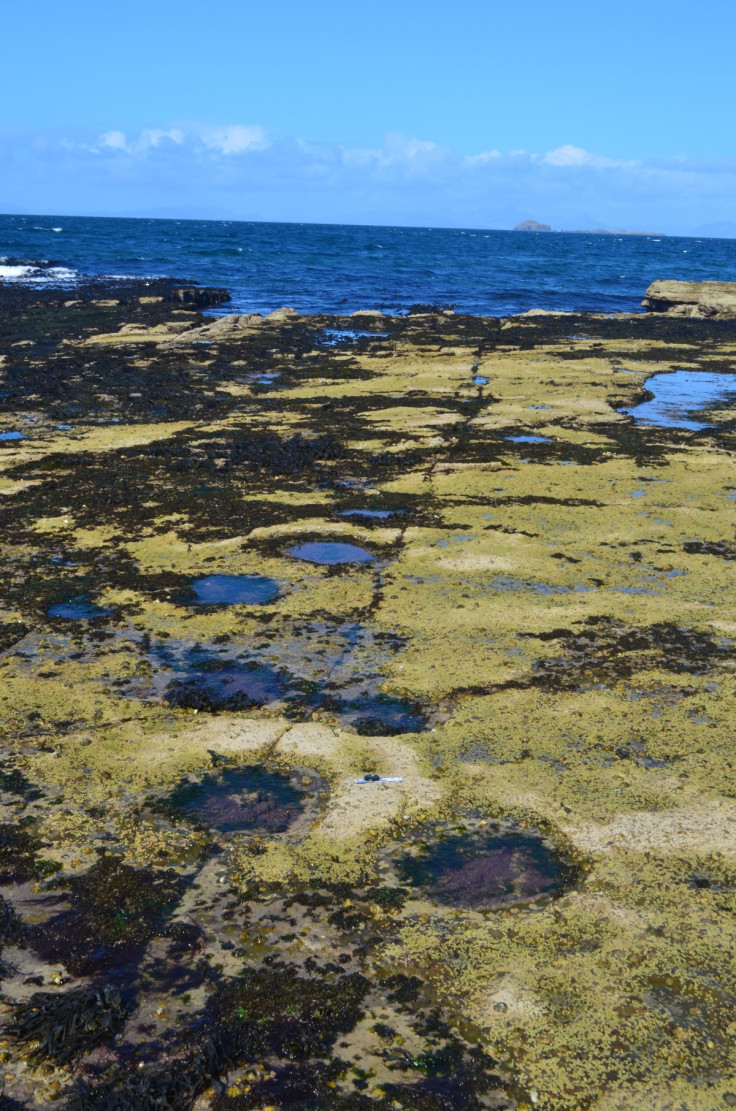Dinosaur disco preserved in stone: Sauropod tracks discovered on Scotland's Isle of Skye

Hundreds of sauropod tracks have been discovered on Scotland's Isle of Skye, shedding light on the evolution of some of the biggest dinosaurs ever to have lived. This is the first time sauropod footprints and handprints have been found in Scotland and has allowed scientists to better understand the habitats and lifestyles of these prehistoric giants.
Sauropods lived on the Isle of Skye around 170 million years ago and would have grown to at least 15m in length and weighed over 10 tonnes. Fossils from the Middle Jurassic Period like these are very rare and the Scottish island is one of the few places where they can be found.
Publishing their findings in the Scottish Journal Of Geology, the team from the University of Edinburgh and the Royal Zoological Society of Scotland said that before the discovery, the only evidence sauropods lived in Scotland came from bone and teeth fragments.
They were able to analyse the structure of the footprints to establish that these dinosaurs were early and distant relatives of the likes of Brontosaurus and Diplodocus. The largest footprint to be found was 70cm in diameter and the species had retained a large claw on one of its digits that produced "narrow gauge trackways".

The tracks were found in layers of rock that at the time would have been at the bottom of a shallow, saltwater lagoon. Study leader Steve Brusatte said: "The new tracksite from Skye is one of the most remarkable dinosaur discoveries ever made in Scotland. There are so many tracks crossing each other that it looks like a dinosaur disco preserved in stone. By following the tracks you can walk with these dinosaurs as they waded through a lagoon 170 million years ago, when Scotland was so much warmer than today."
Researchers say the latest find adds to the evidence suggesting sauropods spent a great deal of time in coastal areas and shallow water. Previously, it had been thought these massive dinosaurs only lived on land. "The new Skye tracks document multiple generations of sauropods living within the lagoonal environments of Jurassic Scotland and along with other tracks found over the past two decades, suggest that sauropods may have frequented such environments, contrary to their image as land-bound behemoths," they wrote.
While identifying the Skye dinosaurs to a particular ichnotaxon "is difficult", they said: "The prints closely match the morphology of tracks classified in the 'Breviparopus-like/Parabrontopodus-like' category".
Tom Challands, who was part of the discovery and research, said: "This find clearly establishes the Isle of Skye as an area of major importance for research into the Mid-Jurassic period. It is exhilarating to make such a discovery and being able to study it in detail, but the best thing is this is only the tip of the iceberg. I'm certain Skye will keep yielding great sites and specimens for years to come."
© Copyright IBTimes 2025. All rights reserved.






















